Unlock the Hidden History of County Hall: Power Struggles, Modern Marvels, and VM Elevators’ Incredible Journey!
July 23, 2024
CASE STUDY: Unlock the Hidden History of County Hall: Power Struggles, Modern Marvels, and VM Elevators’ Incredible Journey!
From 2018 to present day, VM Elevators has been maintaining and modernising the lift systems at the iconic County Hall. Today, we delve deeper into its history and why it serves as a pinnacle of London’s rich history.
The heritage of County Hall, an iconic landmark on the South Bank of the River Thames in London, intertwines the city’s administrative evolution, architectural advancements and cultural growth.
Let’s explore the history of County Hall and see how VM Elevators has been pivotal since 2018 in maintaining one of London’s beacons in the cityscape.

The Early Days of County Hall
County Hall is a well-known landmark on the South Bank of the River Thames in London. It’s important because it shows how London’s government and architecture have changed over time. Built in the early 20th century, it was first the headquarters for the London County Council (LCC) and later for the Greater London Council (GLC).
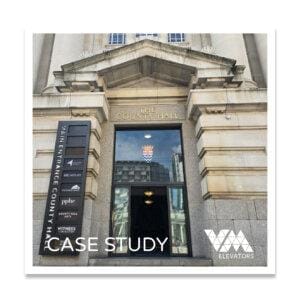
Building County Hall
In the late 1800s, London’s local government, the LCC, needed a bigger space. In 1905, they held a competition to design a new building, and architect Ralph Knott won. Construction started in 1911 but was delayed by World War I. The building opened in 1922 and was finally finished in 1933. Made of Portland stone with a grand rotunda, it’s a beautiful example of Edwardian Baroque architecture.
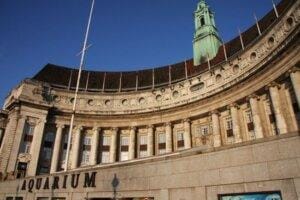
Architectural Significance
County Hall is a fantastic example of Edwardian Baroque architecture, a style popular in early 1900s Britain. The building’s grand entrance, with big columns and detailed sculptures, shows off the pride and power it was meant to represent. Inside, it has wide hallways, marble staircases, and impressive meeting rooms, like the Council Chamber with its high ceilings and rich wood panelling. The Rotunda, a famous circular space, adds to the building’s grandeur.
The London County Council Era
When County Hall first opened, it became the centre of London’s local government. The LCC managed education, housing, public health, and transportation. They created parks, improved living conditions with social housing projects, and developed a comprehensive public education system.
Transition to the Greater London Council
In 1965, the LCC was replaced by the Greater London Council (GLC), which managed a larger area and more responsibilities. County Hall remained important, involved in major projects like regenerating Docklands and expanding public transportation. The GLC also supported cultural initiatives and the arts.
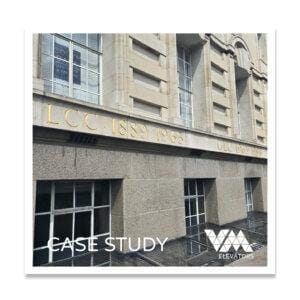
The Thatcher Years and the Abolition of the GLC
In the 1980s, there was tension between the central government and the GLC, led by Ken Livingstone. Prime Minister Margaret Thatcher’s government abolished the GLC in 1986, ending County Hall’s role as London’s local government headquarters.

Post-GLC Era and Commercial Transformation
After the GLC was abolished, County Hall was sold to a Japanese company in 1988. It was redeveloped into a mixed-use complex with hotels, offices, and cultural attractions like the London Marriott Hotel County Hall and the Sea Life London Aquarium. In 2000, a new form of city-wide governance was established, but it was based in City Hall near Tower Bridge.
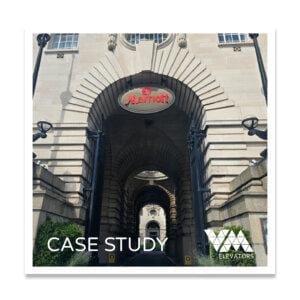
VM Elevators: Guardians of County Hall’s Vertical Transportation
Since 2018, VM Elevators has maintained and operated the elevators at County Hall. We make sure the lifts work smoothly and meet modern standards while preserving their historical integrity. This job is an honour for us, allowing us to contribute to the legacy of this iconic building.
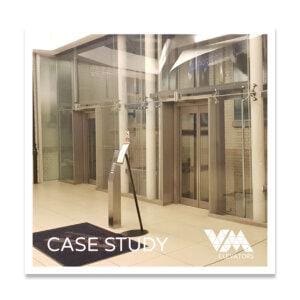
Why Lifts Are Important at County Hall
The lifts are super important for inclusivity and getting around County Hall. They help:
- Hotel Guests: People staying at the London Marriott Hotel County Hall use the lifts to easily move between floors.
- Office Workers: Many businesses work inside County Hall, and the lifts help people get to their offices quickly.
- Tourists and Visitors: Attractions like the Sea Life London Aquarium and the London Dungeon bring lots of visitors who need the lifts to get around.
The lifts at County Hall are a great example of combining old and new. We keep them safe, efficient, and beautifully maintained, fitting in perfectly with the historic building.
For VM Elevators, taking care of these lifts is a special job that shows our commitment to excellence.
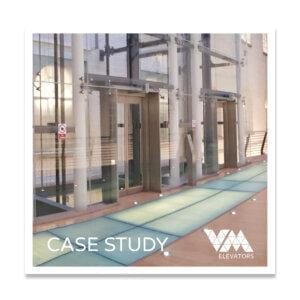
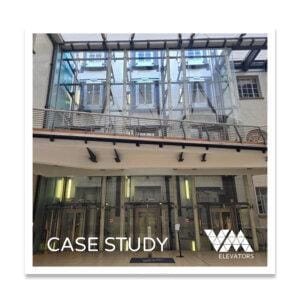
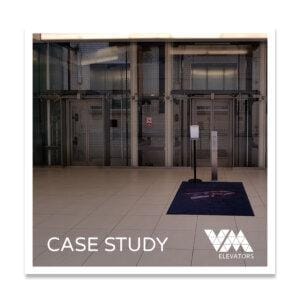
Cultural and Social Impact
County Hall has been more than just an administrative building; it’s a symbol of London’s resilience. It survived World War II bombings and has hosted many exhibitions, events, and performances. Attractions like the London Dungeon have made it a key cultural landmark on the South Bank.
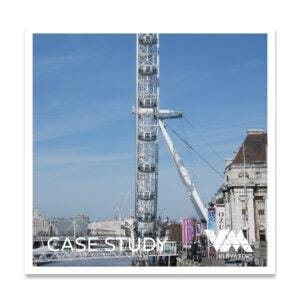
Architectural Preservation and Legacy
Preserving County Hall’s architectural integrity is crucial. It’s a Grade II* listed building, meaning any changes must respect its historical and aesthetic value. Restoration projects balance modernisation with maintaining its original character. County Hall’s blend of classical and modern elements has influenced other public buildings and contributed to London’s architectural heritage.
County Hall is a monument to London’s changing governance, architectural innovation, and cultural richness. From its beginnings as the LCC headquarters to its current role as a commercial and cultural hub, it has adapted to the city’s evolving needs.
Its history reflects London’s challenges and triumphs.
For VM Elevators, maintaining the lifts at County Hall is a symbol of prestige, ensuring the building remains accessible and operational for everyone.

#ElevateYourBusiness today and 📞 call us for free on 0800 448 8615 to speak to one of our expert management team – or submit a free quotation request at vmelevators.com
#wearevmelevators
